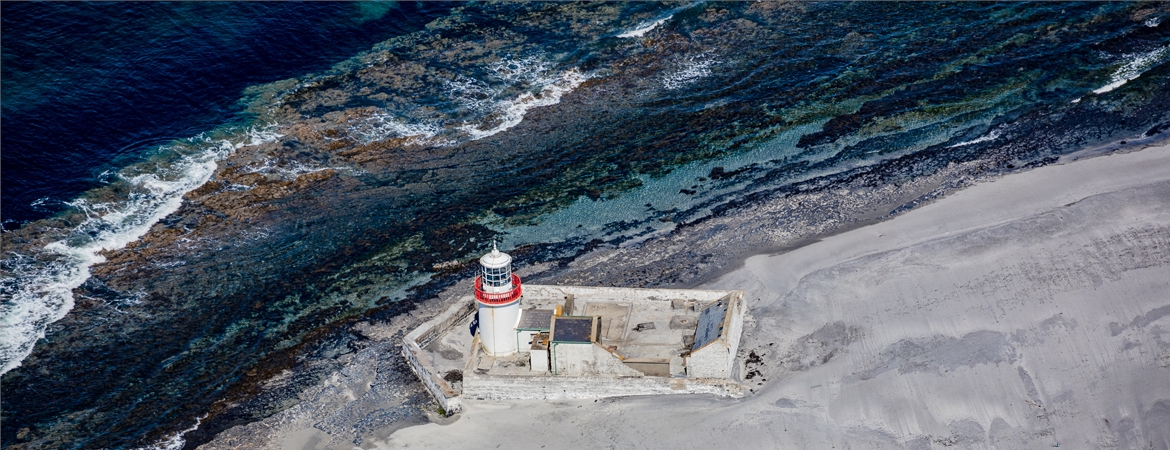The replacement of the ILV Granuaile by 2030, which accounts for 86% of our emissions, with a more fuel-efficient vessel is key to our carbon reduction targets.
Irish Lights, since its very beginnings, has been committed to the protection of the natural environment in which it operates. The nature of our business is such that we will be one of the first affected by any change in the coastal environment or weather patterns. Irish Lights welcomes and endorses the Climate Action Plan 2024.
National and international measures to address the climate emergency will have significant impacts over the period of this strategy. Climate change will have direct impacts on our coastal network through the likely risk of increased extreme weather events and coastal flooding. These same events also impact on safe navigation for AtoN users.
Given the unique locations of our coastal infrastructure significant opportunities have arisen over the period of the last strategy to support wider national objectives for climate, environmental and biodiversity monitoring. This includes the contribution of our MetOcean network to the National Flood Forecasting Service and collaboration with the Office of Public Works, National Parks and Wildlife Service, Environmental NGOs, and Universities/Research Groups on biodiversity and nature protection projects such as those at Skelligs and Inishtearaght.
The challenges of Climate Change have required a steady ramping up of our investment in sustainability, environmental protection and biodiversity. This is evidenced by the production in 2023 of a comprehensive Sustainability Strategy and Policy Statement and now the inclusion of our commitment to Sustainability, Climate, Environment and Biodiversity as a distinct Focus Area of this strategy.
Meeting these targets will not be without its challenges. The remote location of our coastal infrastructure requires a ship and helicopter to facilitate access. The conversion of all offshore stations to solar power and LED lights has reduced maintenance requirements but there is still a need to access these stations by sea and by air. The replacement of the ILV Granuaile by 2030, which accounts for 86% of our emissions, with a more fuel-efficient vessel is key to our carbon reduction targets.
Our network of lighthouses makes a significant contribution to the cultural and biological diversity of our coastline. We will continue to work closely with local communities, government agencies, academic institutions, environmental organisations and other stakeholders to increase our understanding of these impacts. This will be reinforced by our climate adaptation study and 'Manage by Nature' approach. Our ongoing work will continue to preserve Irish Lights presence on the coast which has positively impacted coastal communities through the provision of our core services and by the alternative use of its coastal infrastructure for tourism and heritage activity.


